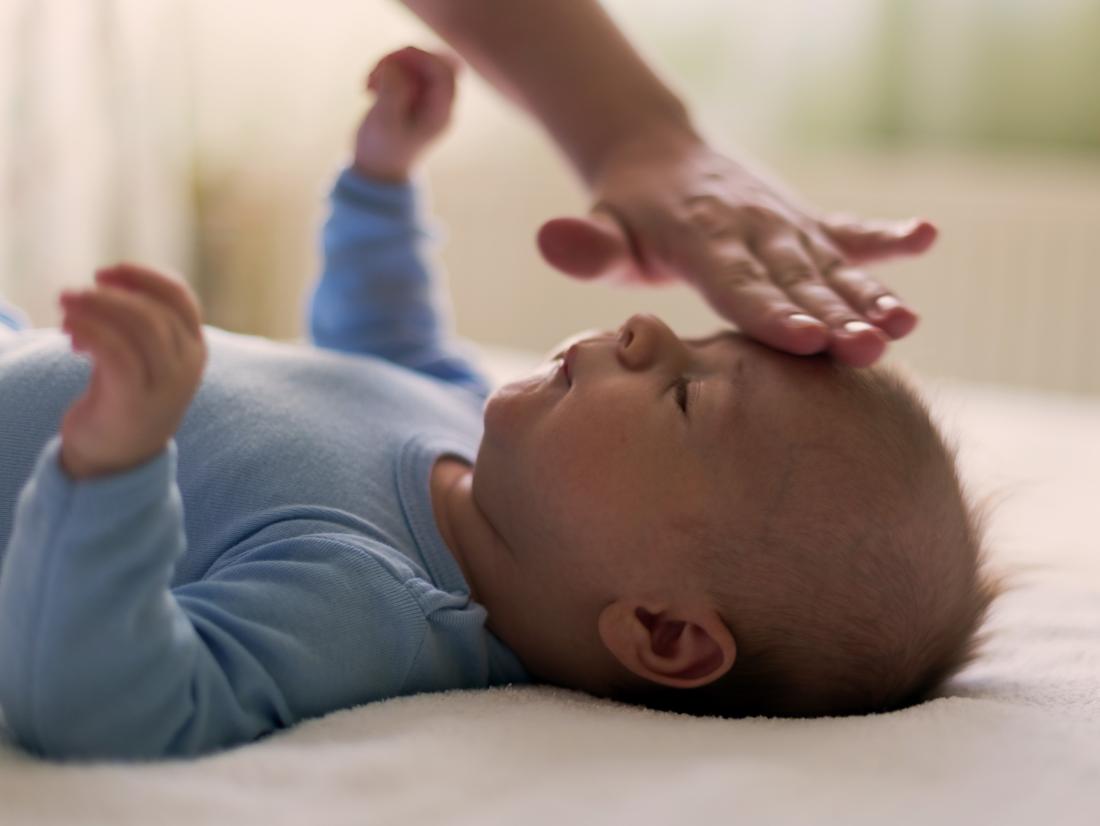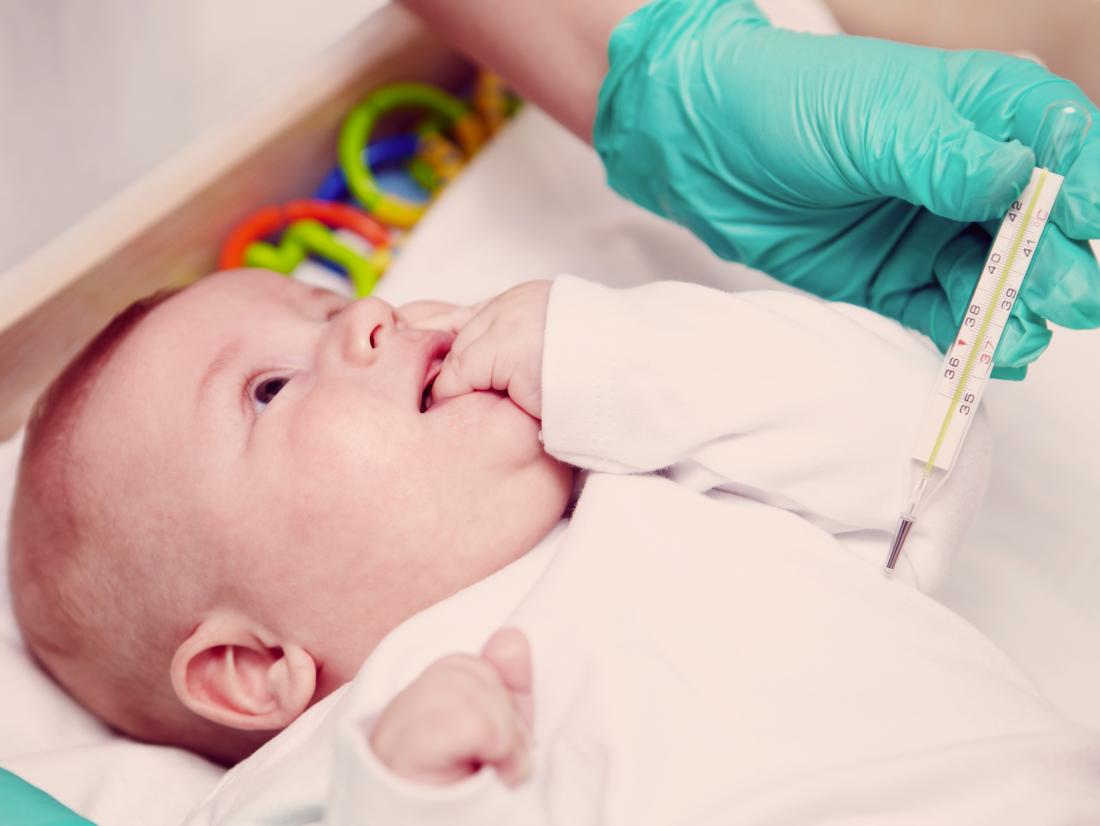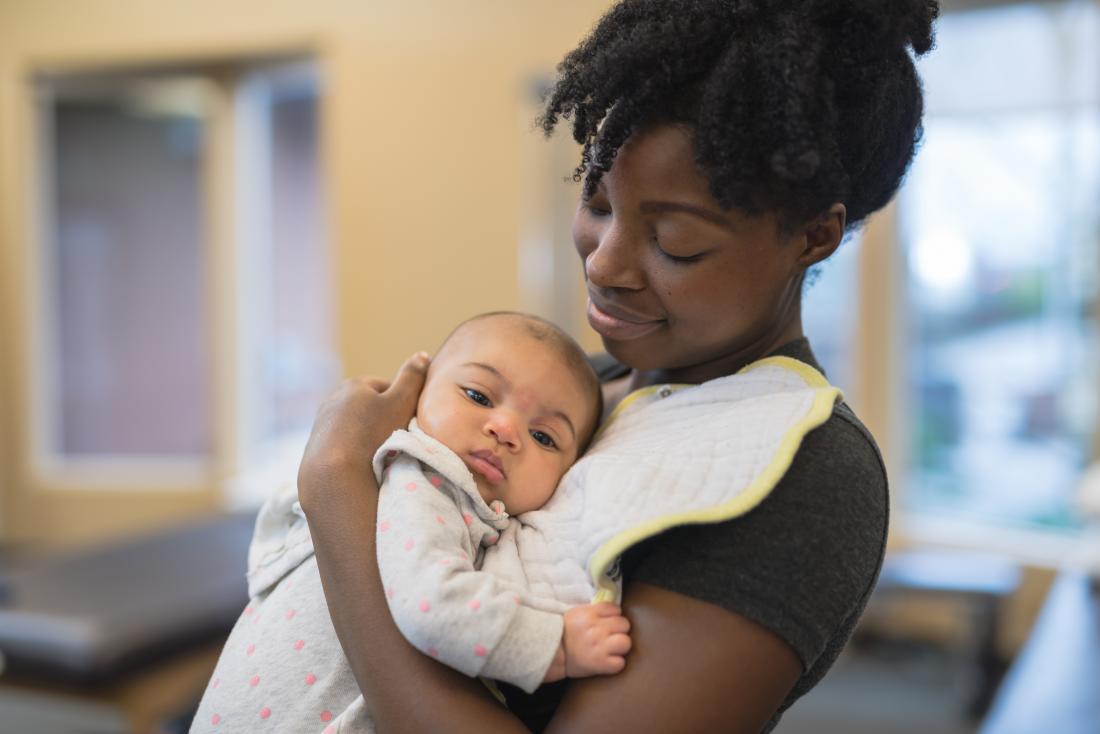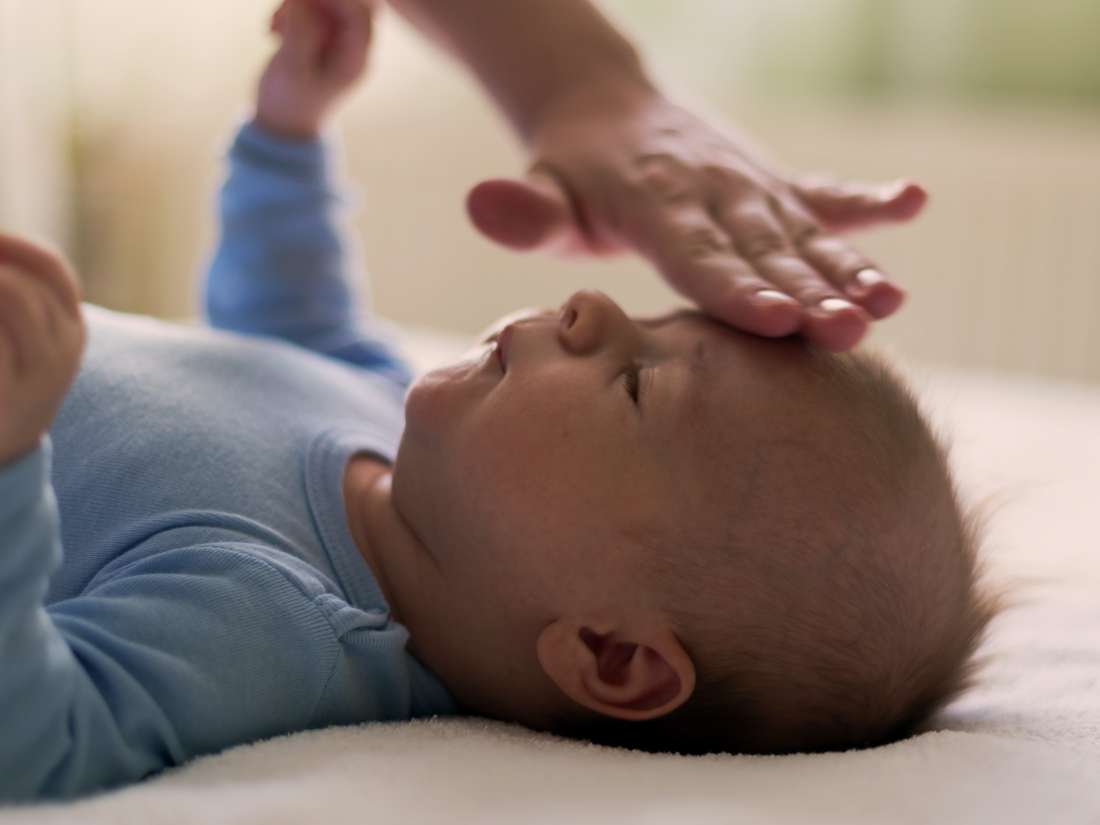The average healthy body temperature is 98.6°F. Shifts in a baby’s activity level or environment can affect their temperature, while different methods of taking a temperature can give slightly different readings.
Newborns and babies are less able to regulate their body temperature. Because of this, when a baby has a low temperature, it is important to address the cause quickly.
Causes

A baby’s temperature may be low following a prolonged period in water.
A variety of factors can cause a low temperature in a baby. They include:
- cold weather
- prolonged periods in water
- not drying a baby after birth
The most common reason for low body temperature is that babies, especially newborns, cannot regulate their body temperature as well as older children and adults. So exposure to even slightly low temperatures is more likely to cause a low body temperature in a newborn.
It is also important to note that taking temperatures incorrectly or using inaccurate equipment may give incorrect readings. Using a variety of methods or thermometers may address inaccuracies.
Accompanying symptoms and complications
A low body temperature poses more dangers to newborns, especially those born prematurely or at a low birth weight.
A baby who has a low body temperature may:
- develop blue lips or fingers
- feel very cold
- act lethargic or sick
The risks of a prolonged low body temperature include:
Ideal baby temperatures

A rectum temperature reading usually provides the most accurate information.
The ideal baby temperature depends on the method a person uses to take the temperature. In babies younger than 2 years old, rectum temperature readings offer the most accurate information, provided the parent or caregiver takes the measurement correctly, using working equipment.
Healthy temperature readings are as follows:
- Rectal: 97.9 to 100.4°F
- Mouth: 95.9 to 99.5°F
- Armpit: 97.8 to 99.5°F
- Ear: 96.4 to 100.4°F
Temperatures below these ranges may signal hypothermia, which is a dangerously low body temperature. Temperatures above these ranges could be a sign of a fever. A fever may mean the baby has an infection or is too hot.
Each baby is different. Sometimes a falling temperature indicates a problem even if the baby’s temperature is within the normal range. So ask a healthcare provider about the ideal temperature for the baby.
The World Health Organization (WHO) recommend measuring a very unwell baby’s temperature as frequently as hourly. In a very small baby, taking the temperature two to four times daily can help with detecting unhealthy temperature swings. The WHO advise taking daily temperature readings in an infant whose condition is improving.
Treatments
The correct treatment depends on why the baby’s temperature is low. Babies are vulnerable both to cold and to overheating. Because of this, parents or caregivers should not overdress babies, put them in front of hot radiators, or otherwise expose them to intense heat in an attempt to warm them.
It is important to see a healthcare provider if a baby has a low temperature that does not rise after using strategies such as dressing the baby more warmly or increasing the temperature of the house.
When a newborn has trouble regulating their body temperature, some strategies can help. They include:
- drying the baby to prevent heat loss
- holding the baby skin-to-skin against the warm body of a parent or caregiver
- covering the baby with a blanket, especially during skin-to-skin contact
- breastfeeding
If these strategies fail, a healthcare provider may recommend:
- warming devices, such as an over-the-bed warmer or heat lamp
- placing the baby in an open bed with a radiant warmer
- putting the baby in an incubator
Prevention
Dressing a baby in seasonally appropriate clothing—without overdressing or overheating the baby—can prevent them from getting too cold. Skin-to-skin contact with a parent or caregiver is also helpful because their warm body may help regulate the baby’s body temperature.
However, it is not possible to prevent all cases of hypothermia or low body temperature. Sometimes, a low body temperature indicates that the baby’s brain is not sending the right signals to regulate its body temperature or that the baby’s body cannot do certain things that would generally raise body temperature.
Seeking prompt medical care when a baby has a body temperature more than a degree below normal can help prevent serious complications.
When to see a doctor

Parents and caregivers should talk to a doctor if their baby has an abnormal temperature.
Infections are more dangerous in young infants. Babies and newborns are also less able to regulate their body temperature.
Parents or caregivers should err on the side of caution when a baby has an abnormal temperature, especially if the baby was born prematurely or is younger than 3 months old. Call a doctor anytime a baby’s temperature falls outside the normal range.
Seek emergency care if a baby seems lethargic or their temperature continues falling despite efforts to warm them.
Parents of low birth weight and premature babies should ask a healthcare provider when to seek emergency care for a low temperature.
Summary
It is important to take changes in temperature seriously, particularly if the baby has other health risk factors, such as an infection, a history of breathing problems, or they were born prematurely.
However, a low body temperature is not a reason to panic, especially if the temperature is just a few tenths of a point outside the normal range.
A pediatrician or other healthcare provider can help parents or caregivers decide if the low temperature is normal and healthy, or a sign of a problem. Seek treatment as soon as possible, since a healthcare provider can offer peace of mind and ensure the baby gets the right treatment.
